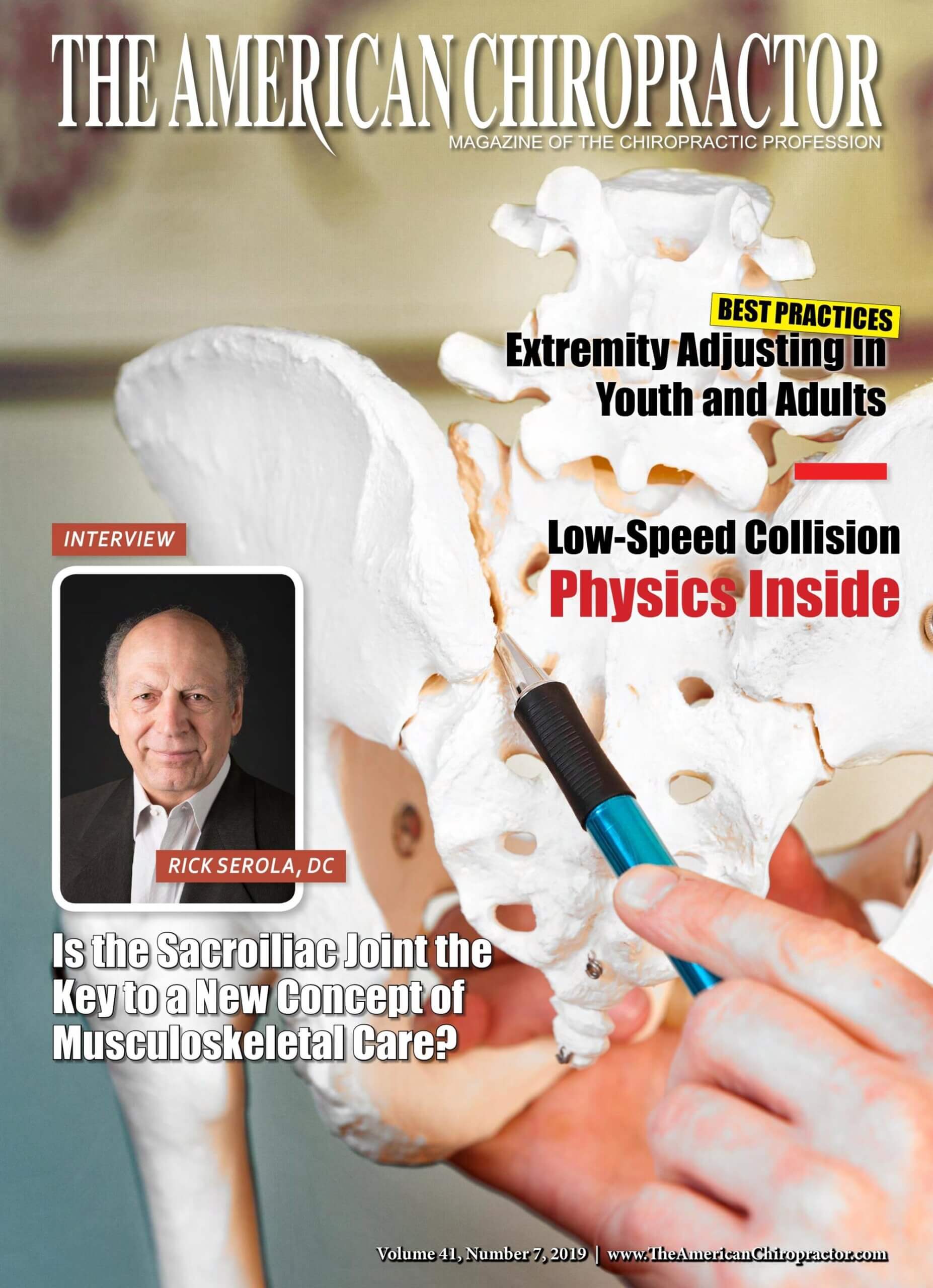Dr. Rick Serola Featured in The American Chiropractor

Dr. Rick Serola Featured in The American Chiropractor
Dr. Rick Serola was thrilled to discuss musculoskeletal integration with The American Chiropractor, America’s Most Read Chiropractic Magazine. In the interview, Dr. Serola explains how his 30 years of research into biomechanics resulted in the invention of not only The Serola Sacroiliac Belt and other orthopedic solutions, but also the creation of the Musculoskeletal Integration Theory. This theory offers a new model that examines how injuries occur, how they interrelate and spread, how they become chronic and how to treat them. Dr. Serola also reveals the challenges he faces in the ongoing development and dissemination of his research.
Here is a preview the interview:
TAC: What are the biggest misconceptions about the sacroiliac joints?
RS: I believe the biggest one would be the Keystone concept of form and force closure and the beliefs that flow from that. The Keystone concept supposes that the sacrum is a wedge jammed into the pelvis causing bone-to-bone force transfer from the sacrum through the ilium and down to the legs. More information is needed to bridge the gaps in this theory. For example, one idea, based on Keystone, is that sacroiliac joint (SIJ) surfaces are roughened, and that friction is necessary to help keep the joint stable, but we know friction is a result of dysfunction. The sacrum is suspended from the ilia, so there should be no rubbing unless there is ligament sprain or some type of dysfunction. Principles such as the ligamento-muscular reflex, muscular compensation patterns, and the effects of lumbo-pelvic traction contradict the keystone model. The Musculoskeletal Integration Theory incorporates these and other key concepts as well.
TAC: Tell us a little more about the Musculoskeletal Integration Theory?
RS: The Musculoskeletal Integration Theory is the result of over 30 years of my research. It is the only central, unifying biomechanical model that can be used to understand and effectively treat the musculoskeletal system as an integrated structure. The SIJs are the major source of musculoskeletal pain and happen to be the least understood joints in the body. I have read about 1000 peer reviewed medical articles and 100 medical books, searching for patterns. My theory is a simple, common-sense approach to understanding the musculoskeletal system. It integrates innate movement and function and can be used with any technique.
TAC: What surprises have you run into in the process of your research?
RS: The problem that’s led us down the wrong path is that we have very little understanding of the SIJ, so there is a tendency to settle for incomplete information. As I study, I find so many problems and dead ends that lead us nowhere. Since there is no model that ties everything together, back pain is a mystery and will remain a mystery unless we…
For free access to the full interview, please visit: The American Chiropractor https://bit.ly/2Z84GHo

